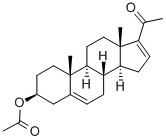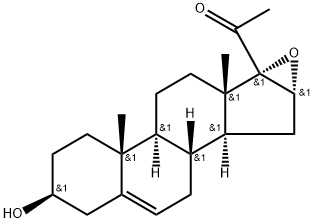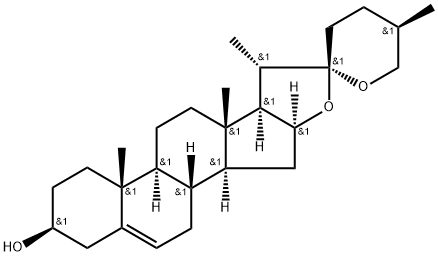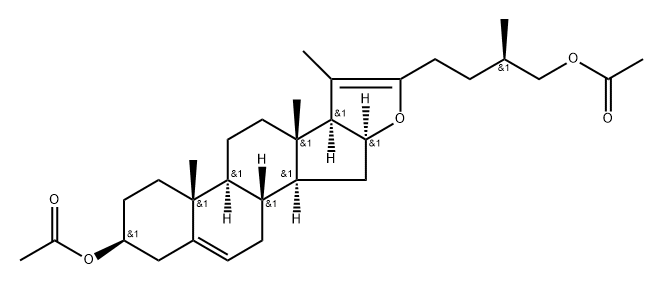
16-Dehydropregnenolone synthesis
- Product Name:16-Dehydropregnenolone
- CAS Number:1162-53-4
- Molecular formula:C21H30O2
- Molecular Weight:314.46
Yield:1162-53-4 95% ,2857-75-2 88%
Reaction Conditions:
Stage #1:diosgenin with acetic anhydride in acetic acid at 200; for 1 h;
Stage #2: with dihydrogen peroxide;(NH4)3PMo12O40*6H2O in dichloromethane;water for 2 h;Heating / reflux;
Stage #3: with potassium carbonate in dichloromethane;water for 2 h;Product distribution / selectivity;Heating / reflux;
Steps:
7
Example 7 Degradation of diosgenin to 16-dehydropregnenolone and 4R-methyl-δ-pentyl lactone 10 g of diosgenin, dissolved in acetic acid and acetic anhydride, was kept in the pressure kettle at 200° C. for one hour, then the low boilers were removed under reduced pressure and the residue was dissolved in 50 ml of dichloromethane. 18 mg of (NH4)3[P(Mo12O40)].6H2O (0.1 mmol) and 5 ml of hydrogen peroxide (30% H2O) were added, and this mixture was refluxed for 2 hours. After K2CO3 was added, it was kept on refluxing for 2 hours. The mixture was concentrated, diluted with water, and filtrated to get 7.2 g of 16-dehydropregnenolone in 95% yield. The water layer was acidified and extracted with organic solvent to give 2.4 g of 4R-methyl-δ-pentyl lactone in 88% yield.
References:
SHANGHAI INSTITUTE OF ORGANIC CHEMISTRY, CHINESE ACADEMY OF SCIENCES US2006/166955, 2006, A1 Location in patent:Page/Page column 4

979-02-2
289 suppliers
$20.00/100mg

1162-53-4
132 suppliers
$57.00/1ea

974-23-2
117 suppliers
$116.00/10g

1162-53-4
132 suppliers
$57.00/1ea
![2H-Pyran, tetrahydro-2-[[(3β)-17-iodoandrosta-5,16-dien-3-yl]oxy]- (9CI)](/CAS/20210305/GIF/136321-37-4.gif)
136321-37-4
1 suppliers
inquiry

109-92-2
279 suppliers
$16.00/25mL

1162-53-4
132 suppliers
$57.00/1ea



